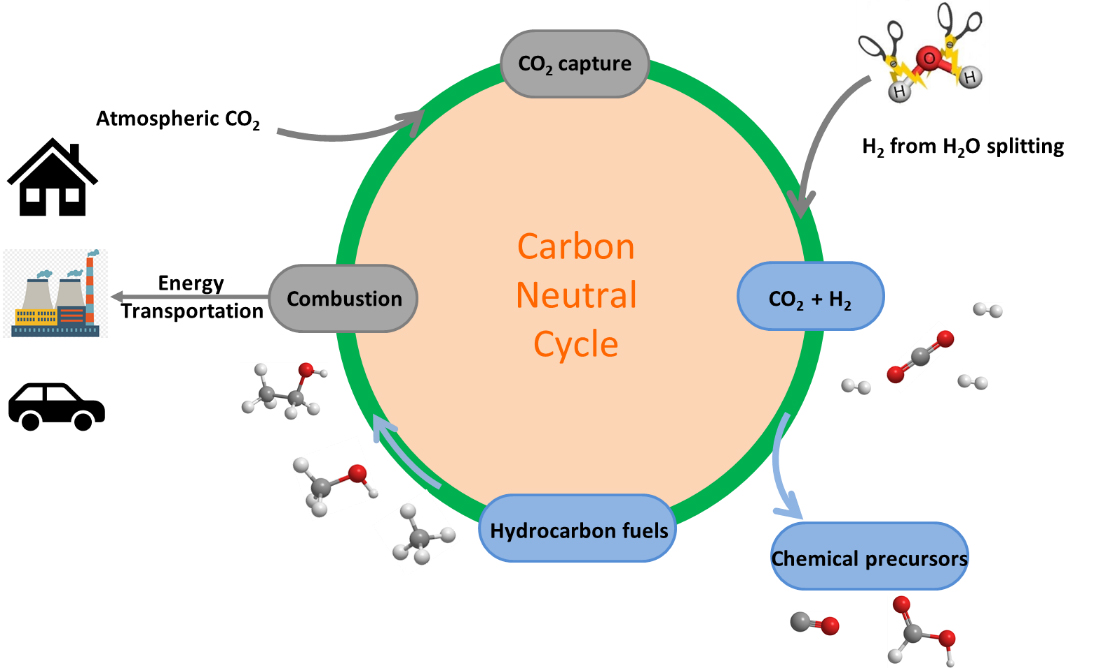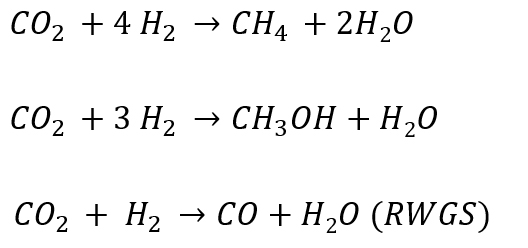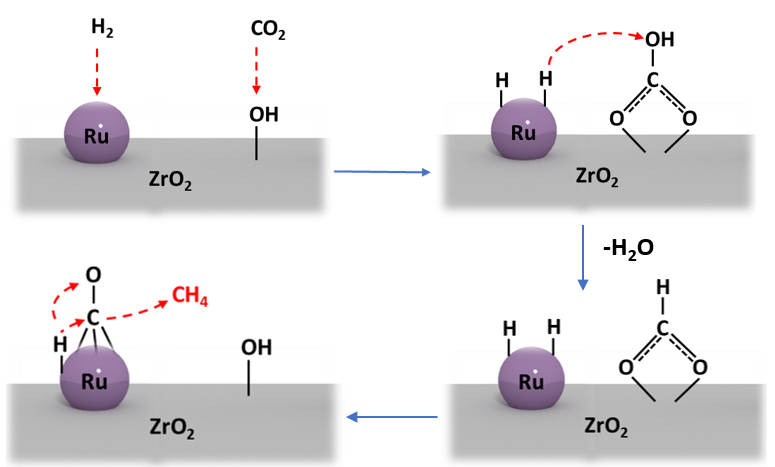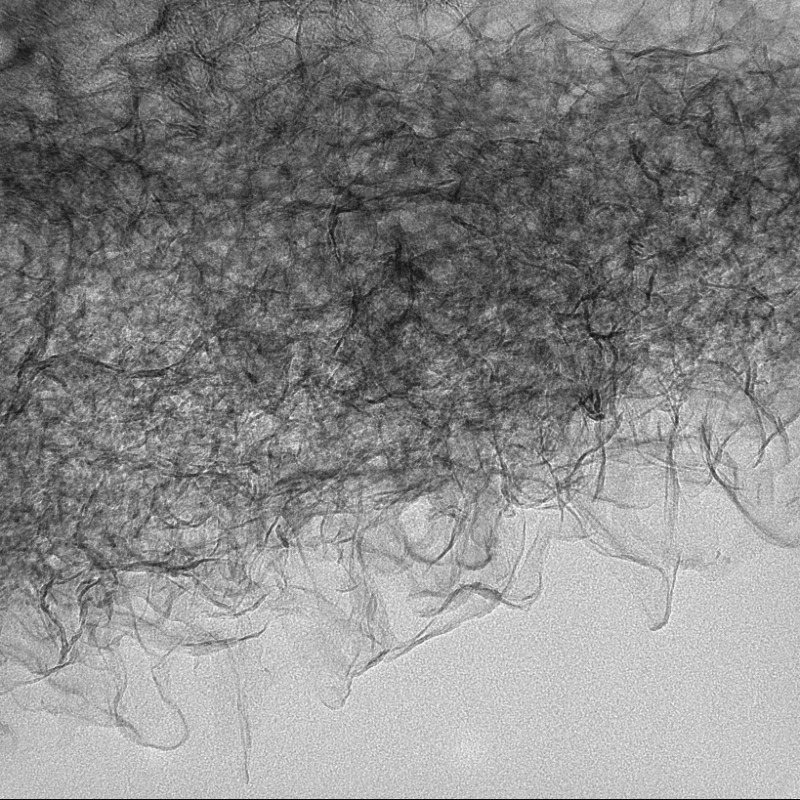Jiajia Zhao
Concerns about record high (and still rising) atmospheric CO₂ concentrations is hastening the shift to the use of renewable fuels. One approach to mitigate this is CO₂ hydrogenation, i.e. the reaction of CO₂ & H₂ over a solid catalyst to produce carbon-neutral fuels including methane & methanol. Thermal- and photo-catalytic CO₂ conversion into hydrocarbons have been widely investigated as two promising CO₂ hydrogenation strategies. However, their cost-effective industrial applications will depend significantly on the design of efficient catalysts that are stable at relatively intense thermal-catalytic conditions or relatively mild photocatalytic conditions, whilst providing high conversion rate & selectivity. Supported plasmonic metals (e.g. Ru, Pt, Co, Ga, etc.) have demonstrated enhanced hydrocarbon formation by promoting H₂ dissociation and metal-support interaction. In addition, these metals can provide active sites by assisting with electron transfer during temperature- or light-driven reactions. The support material also plays an important role in stabilising metal particles and fine-tuning their electronic environment to improve reaction rate & selectivity, e.g. oxide supports such as ZrO₂ can provide adsorption sites for reactants or intermediates. The synergy amongst all the catalyst’s components is highly related to the reaction mechanism, and disclosing this mechanism via regulating the catalyst system is key to the rational design & optimisation of catalysts.
This project will design Ru/ZrO₂-based catalysts for CO₂ hydrogenation and investigate their reaction mechanism. A library of Ru/ZrO₂-based catalysts has been synthesised & characterised. Using a multi-reactor catalyst testing rig, catalysts have been screened in parallel for their performance at CO₂ hydrogenation. The results of this systematic investigation have been analysed together with insights obtained from in-operando PXRD characterisation and in-situ DRIFT. This synergistic approach is crucial to assembling credible reaction mechanisms for optimal CO₂ reduction using these catalysts, and will lead to further opportunities for carbon-neutral fuel production.
 Figure 1: The carbon-neutral cycle
Figure 1: The carbon-neutral cycle
 Figure 2: Different approaches to synthesising useful products from gas-phase CO₂ hydrogenation
Figure 2: Different approaches to synthesising useful products from gas-phase CO₂ hydrogenation
 Figure 3: Graphical reaction mechanism for CO₂ methanation over Ru/ZrO₂
Figure 3: Graphical reaction mechanism for CO₂ methanation over Ru/ZrO₂
| This project was conducted in conjunction with CSIRO and AINSE. |

Nanostructures
Functional strontium phosphate-coated magnesium alloys for orthopaedic use


